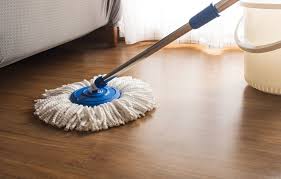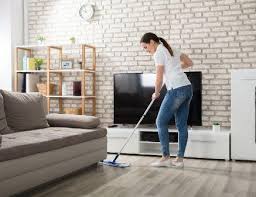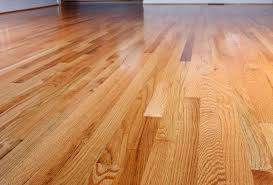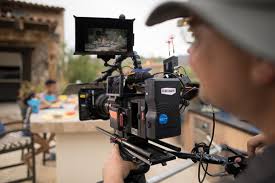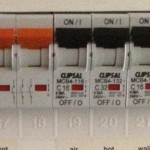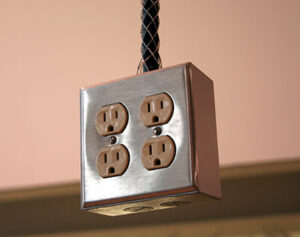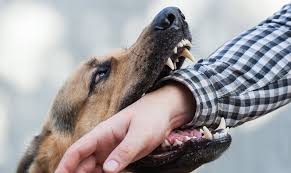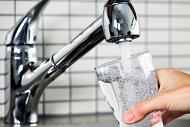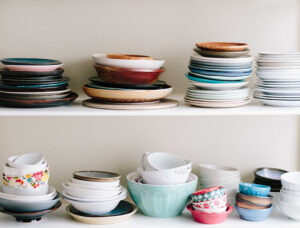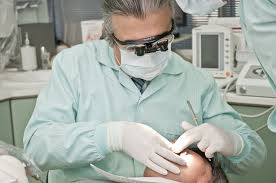The ultimate guide to deep cleaning your house, with room-by-room checklist
Deep cleaning is all about the details. When you take the time to clean the things in your home that are a little harder to get to, you’ll notice how it makes your place feel more tidy and welcoming. To get started, create your cleaning schedule, pick a room, and make a quick run to the store. Then, get ready to tackle all of the details that are covered in our deep cleaning tips.
How often should you deep clean?
There are a few different ways you can begin to integrate deep cleaning into your home upkeep routine. If you’ve done any spring cleaning in the past, that’s great! Spring is the perfect time to declutter, clean, and organize, but you should also deep clean more frequently than one season a year. One schedule you can choose to follow is seasonal, or about one weekend deep clean every 3 months. Another option is to break down your deep cleaning checklist into smaller monthly or weekly tasks, tackling one room per month, or 1-2 tasks per week, so that you chip away on an ongoing basis.
What you’ll need
You don’t need fancy specialty cleaners to deep clean your house. Common products like white vinegar, baking soda, dish soap, a scrub brush, and microfiber cleaning cloths are effective and easy to find.
Here’s a starter list to help you stock your cleaning cabinet or caddy:
Rubber gloves
All purpose cleaner (or homemade)
Glass cleaner
Baking soda
White vinegar
Dish soap
Sponge
Scrub brush
Detail brush or old toothbrush
Squeegee
Plastic bucket
Spray bottle
Microfiber cloths
Cleaning cloths (like dish towels or rags), or paper towels
Vacuum with attachments
Mop or steamer
Broom or vacuum with a hard flooring setting
Two simple homemade cleaning products
Baking soda paste and one to one vinegar spray are both used throughout our deep cleaning tips. To make the one to one baking soda paste, start with a cup of baking soda and add splashes of water until it forms a paste similar to the consistency of wet sand.
Tip: If you are sensitive to the scent of vinegar, you can add a few drops of any essential oil (like citrus or lavender) to temper the aroma. A squeeze of lemon is a simple fix if you can’t find essential oils.
Tip: Look for the gallon jug of white vinegar and the large bag of baking soda. Buying multiples of the regular sized boxes is perfectly fine but it is more cost effective if you can find the large bag at your local store.

The Ultimate Guide to Deep-Cleaning Your Home
A deep-clean of your house can quickly turn into a multiday affair that ruins your weekend. But it doesn’t have to be. Nor does it need to be an annual event that only happens during a fit of productivity in the spring. There’s no time like the present to tackle your to-do list—we swear it’ll be worth it and over in a flash. “Start at one end of the house and focus on one room at a time,
As you go from space to space, collect the items that don’t belong and either move them to their proper home or to the front door, where you can later recycle, toss, or donate them.
We’re talking your fridge and your cabinets, both of which you can clean with an all-purpose spray and a rag. “Not only is this a great time to clear out old condiments, but you should also pull everything out and wipe down each shelf and drawer,”
recommends simple dish soap and warm water for most surfaces, but you can DIY your own formula for countertops that stain easily, like linoleum. Her go-to: baking soda and warm water.
Don’t forget the details.
Specifically, the oft-overlooked garbage can. Rinse it with warm water, says and then wipe it down inside and out with an all-purpose cleaner.

Ultimate Deep Cleaning Guide
The thought of deep cleaning your house can be overwhelming, especially if its something you haven’t done in a while or if you don’t know where to start and what you should be focusing on. This Ultimate Deep Cleaning Guide
Why Bother Deep Cleaning Your Home?
Deep cleaning your entire home can be a time-consuming process that a lot of people would rather not do. Which is completely understandable, I mean who wants to spend their free time cleaning when there are a TON of other things to get done. But taking the time to clean your house from top to bottom has a lot of tangible benefits including
Reducing the symptoms of allergies and asthma
Reducing the spread of germs and bacteria (particularly helpful during cold and flu season)
Cuts down on the time you’ll need to spend keeping your house clean on a daily basis
Keeps bugs and other pests away
Makes it easier to find the things you need
There are also psychological benefits of having a clean house which include
Improved quality of sleep
Reduces feelings of stress and anxiety
Improves mood and decreases symptoms of depression
Increases productivity
Improves your ability to focus
How often should You be deep cleaning
You can get away with only doing one deep cleaning a year but I highly suggest doing it at least twice. Generally, I do one at the end of the summer and again in the spring. Doing a deep cleaning at the end of the summer helps me transition the house from summer to fall/winter and gets the house cleaned before the rush of the holiday season starts. Doing a deep cleaning in the springs helps me get the house cleaned after being closed up during the cold winter weather.
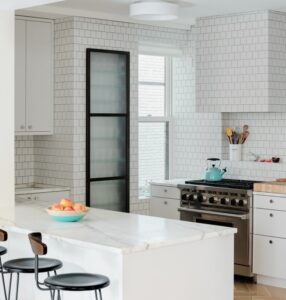
ULTIMATE GUIDE TO DEEP CLEANING YOUR HOME
With summer upon us, and life for many of us slowly returning to normal, it can be a good time to do a deep clean of the home. With many of us having been home for the past few months, and now the summer in full swing, it can be a good time to make sure that our homes are clean and tidy, in an effort to help us all to be as healthy as possible. Whether you have had symptoms of COVID-19 or not, making sure that you are living somewhere free from germs is a good idea right about now, especially as we all start to go out and about more. But what is the difference between a deep clean of the home, and the normal maintenance that will happen through the year?
A regular cleaning routine for maintenance is a much lighter clean, and it helps to keep surfaces clean and clear, and helps you to keep your house in order each week. A deep clean, needed every so often, is a much deeper process and it is also much more detailed, to help to set you up for the summer (or whatever time of year you are looking at). Here are some tips and tricks to make sure that you are deep cleaning your home properly and really making the chance of deep cleaning count.
How to Deep Clean
One of the best things to do is to write yourself or set yourself a plan for how you want things to go. Then you can check off what you have done and when, and know what is next, and when you’ll be able to fit it all in. Starting off with making a list of rooms in the house is a really good idea, and then you can make a note of the tasks needed in each room. There is definitely something satisfying about ticking something off your list as you go, so get your plan and lists sorted! It might be best to give yourself plenty of time to get it all done, for instance, over a couple of weekends. Unless you have time off work and are ready to get it all done in a day or two. It will also depend how big your home is, as to how long this will all take.
If you’re not really sure where to start with all of this, then here are some ideas and prompts to help you to plan the cleaning out. It will vary, depending on your home, of course. But here are some of the things that you can do room by room in your home.
Bathrooms and kitchen
What are some of the tasks to do in the bathroom? Of course, there will be the usual bathtub cleaning and toilet cleaning that would happen each week anyway. But what is needed for a deeper clean?
Disinfect and dust door handles and light switches in the bathroom. Check any of the corners of the room for cobwebs too. Peppermint oil is a great essential oil to repel spiders, if you find that you have a recurring problem.
Clean the bathtub, shower, sinks, and toilets, as you would normally. It can be a good idea to go a little deeper though, and scrub the tiles, the grout, and the whole of the toilet, not just the inside. Germs can fester on the outside of the toilet too, as well as the seat.
If you have shower curtains that are looking quite moldy, then they can be taken off and washed. If not, they will need to be replaced. Shower screens will need to be cleaned with a limescale cleaner, and using a squeegee can be a good idea to make sure that you don’t get water marks on the glass when you’re rinsing it off.
Wash all of your bathroom towels and bathmats. A hot wash, without fabric conditioner is best.
Cleaning mirrors and disinfecting any of the surfaces in the room is a must. Some surfaces, especially corners, can get a little covered in mildew, so that is something to remember.
Clean the bathroom windows, and allow plenty of ventilation, especially if the bathroom is a little moldy.
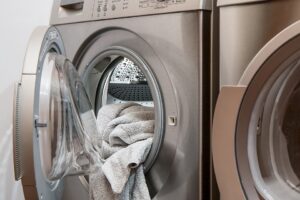
How to Deep Clean Your House in 7 Days
Deep Cleaning Your Home
You have decided that it is time to get your house in order and to keep it clean. After you have followed my plan for decluttering your home, you are ready to give it a deep cleaning. If your housekeeping has been neglected for a while, or if you have just moved into a pre-owned house, this may be a big project. You may be able to knock it out in one weekend, but if not, follow my 7-day plan for deep cleaning your home.
Once you are done, you can follow my weekly cleaning schedule to keep it sparkling and beautiful. You will be amazed to discover how much a clean home positively affects your mood and those in your family.
How to Deep Clean Your Kitchen
Your kitchen needs a general cleaning every night after supper. For the deep cleaning, you need to focus on the large appliances, as well as all kitchen surfaces
Here are some items that will need special attention:
Refrigerator: Starting at the top, take everything out, cleaning each shelf as you go. If a shelf is removable, take it out and clean it with warm soapy water. Most drawers are removable and should also be washed this way. Don’t forget the small shelves inside the door. Wipe down the outside of the fridge, paying special attention to the handles.
Oven: If you do not have a self-cleaning oven, use a cleaner such as Easy Off. For standard ovens, consider lining the bottom with aluminum foil for easier future cleaning. This will not work with convection ovens.
Microwave: Take out any removable trays and wash in warm, soapy water. Wipe out and scrub if necessary with an all-purpose cleaner.
Small appliances: Clean out all the crumbs in your toaster and toaster oven. Wipe down the surfaces of all small appliances.
Cabinets, shelves, drawers: Grab a damp rag and clean spots, spills and splatters with an all-purpose cleaner like Fantastic. This is a job kids can help with.
Counter-tops: Remove everything from the counters and wipe down with an all-purpose cleaner.
How to Deep Clean Your Bathrooms
Bathrooms can get pretty nasty if they have not been cleaned regularly. The problems areas will most likely be the tub and shower. Follow these tips for deep cleaning your bathrooms:
Showers/tubs: If you have a shower caddy, take it out and wash it. It may even need to be replaced. Clean the shower head with an old toothbrush and bathroom cleaner, like Soft Scrub. You may need some heavy duty cleaners for soap scum build-up or mildew stains. The toothbrush works well on tub jets and other small, hard-to-reach places.
Sinks and counter-tops: Take everything off of the counter and wipe down with a bathroom cleaner. Use a toothbrush to scrub away dirt around the drains and faucets.
Toilet: Squirt some cleaner into the toilet, swish it around with the toilet brush, and leave it to soak awhile to fight any stains.
Cabinets and drawers: Wipe down with an all-purpose cleaner.
